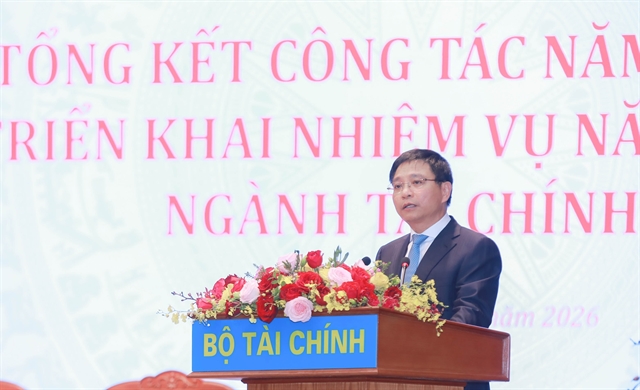 Op-Ed
Op-Ed

Is exploiting people’s ‘short memories’ a matter of policy or official modus-operandi in dealing with projects that provoke public outrage?
This question cannot be escaped as news comes of yet another controversial project being revived, almost two years after being stopped amidst public furore over the harm it would do to the environment.
The southern province of Đồng Nai, reports say, has decided to resume a project involving encroachment of one of the main rivers in the country, which has already been beset by industrial pollution.
The story began three years ago, in 2014 September, when work began on the VNĐ3.2 trillion (US$140.7 million) “Đồng Nai Riverside Landscape Renovation and Urban Development” project.
An artificial peninsula that jutted 100m into the Đồng Nai River was created to build several modern apartment buildings, hotels, office towers, malls, and for public space – embankments and park.
It was only after the ‘peninsula’ was completed that the media got wind of the project’s dubious environmental impact assessment. The resulting outcry rendered further progress untenable, and by 2015 March, the project’s main investor asked to stop all construction activities. The People’s Committee agreed.
Scientists and experts with the Việt Nam Rivers Network (under the Việt Nam Union of Science and Technology Associations, VUSTA) were very vocal about their objections and warnings about the deleterious impacts of drastically changed water flow.
A restricted river with the same volume of water would exert greater, debilitating pressure on both banks as well as waterway traffic infrastructure including bridges, said Doãn Mạnh Dũng, deputy head and general secretary of the HCM City Marine Science-Technology and Economy Association. Others said the flood draining capacity of the river would reduce, leading to longer-lasting floods in the city.
In addition, on paper, only 30 per cent of the project was reserved for commercial buildings and apartment complexes, but going by what has happened with residential projects in Hà Nội and HCM City, there was a chance that by the time the project was done, the ratio of apartment buildings would trump green space and other public spaces. Typically, this would mean that a select few would be able to enjoy the coveted ‘riverside’ view while people of lesser means suffered the consequences of a battered environment - polluted water. Where else would wastewater from the new ‘urban’ cluster flow to, except the nearest water body, the river?
The legality of the project was also a contentious issue. The Law on Water Resources lists “infilling, construction of buildings and other activities that could threaten the stability of the river, lake, reservoir” under its categorical don’ts (Article 9, Item 5).
Meanwhile, the Law on Environmental Protection says “individuals and organisations must not illegally intrude on or carry out constructions on water bodies’ surface and its banks, and must absolutely refrain from infilling.”
Clearly, the investor had not paid much heed to these laws.
Previously, the Ministry of Natural Resources and Environment had formed a group to review and assess project impacts. This group concluded that the project would not affect the river’s flow, and proposed that the farthest encroachment into the river be limited to 98m – down 2m from the original 100m, and that the project’s total area be reduced from 7.7ha to 7.4ha. The paltry adjustments proposed to assuage the public without affecting any real change felt more like an insult.
The central government then decided to kick the ball back to the province’s courtyard, saying Đồng Nai had “full authority” to decide whether or not to continue with the project, and that the Chairman of the provincial People’s Committee would bear ‘ultimate responsibility’ for the decision.
Fair enough, until it is realised that the 586km Đồng Nai River criss-crosses itself through five provinces in southern Việt Nam. It only requires common sense to postulate that any change to the natural condition of the river should require inter-provincial collaboration in decision-making, not just among the authorities, but the people also.
This despite the top brass constantly touting the mantra of not sacrificing the environment for the sake of economic development. Maybe the central government does mean it. However, at the local level, it takes some convincing, especially when, every once in a while, a poorly-planned project with huge risks to the environment pops up into the public discourse. This erodes public trust in official words, and the Government needs to get tough in this regard.
Take the more recent case of a thermal power plant wanting to dump dredged materials near a protected marine area. The plan, put forth in November last year, immediately attracted public ire, which led to it being shelved, but for less than a year. The plan was revived and given the go ahead once again, although there were no extenuating circumstances to discern.
But it is easy enough to discern a pattern here: When the public protests a highly questionable project, it is temporarily put on hold, and once the dust settles on the controversy, it can be revived. Hopefully, the public will not notice or care this time.
This and every similar instance is an abuse of public trust, but they also emphasise the need to remain vigilant against environmental violations of all sorts. Sustainable development cannot be postponed for any reason if we are to pass on a habitable planet to succeeding generations.
As a famous saying twisted infamously by a former US president goes: “Fool me once, shame on you; Fool me twice, shame on me.” The onus is on the public to wise up to old tricks. — VNS




